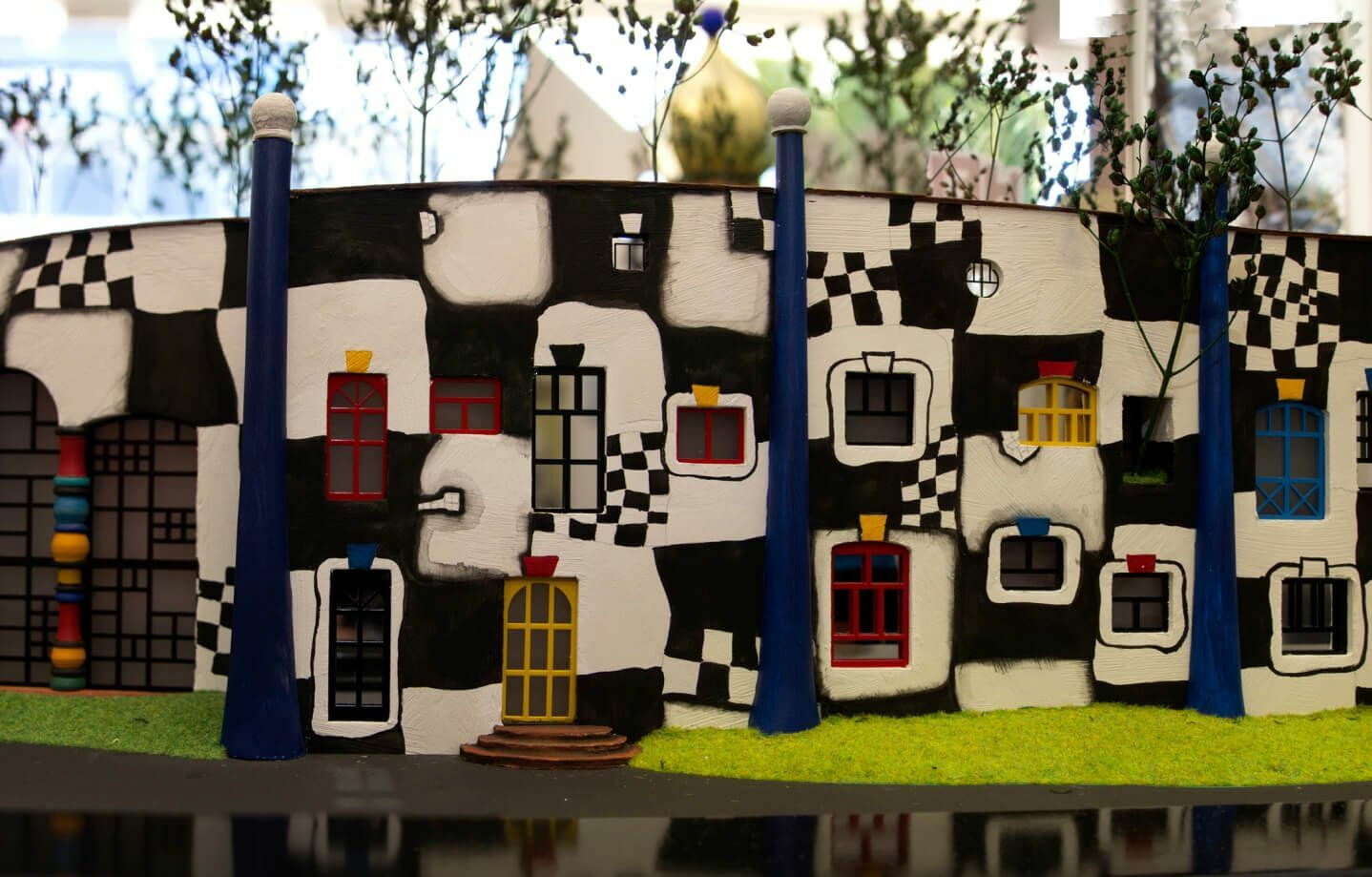Our case.
He thoroughly rejected straight lines, because “there are no straight lines in nature”. He called them “godless and immoral” and advocated “a reconciliation of humans with nature”, which is biophilia in a nutshell.
His iconic architectural art has probably been and will continue to be divisive. Not everyone is going to like the bright colours and eclectic forms of his work, but it is certainly striking and will always attract attention. He built an apartment block in Vienna with ‘undulating’ floors - "an uneven floor is a melody to the feet" - brought trees into indoor spaces and made the connection between human unhappiness and the more linear and “sterile” architectural styles popular in the post-war period.
His 'third skin' philosophy stated that people are surrounded by three layers: their skin, their clothes and the walls of the buildings they inhabit, "which should be in keeping with an individual’s natural requirements". We love this idea and it chimes perfectly with our own thoughts around biophilic design and creating spaces for humans.
His impact on New Zealand will be long remembered. Firstly for the brilliantly wacky public conveniences in Kawakawa, a stop many make on the way north, even if nature isn’t calling at the time, but now, importantly this incredible centre in Whangārei which we can't wait to visit.

